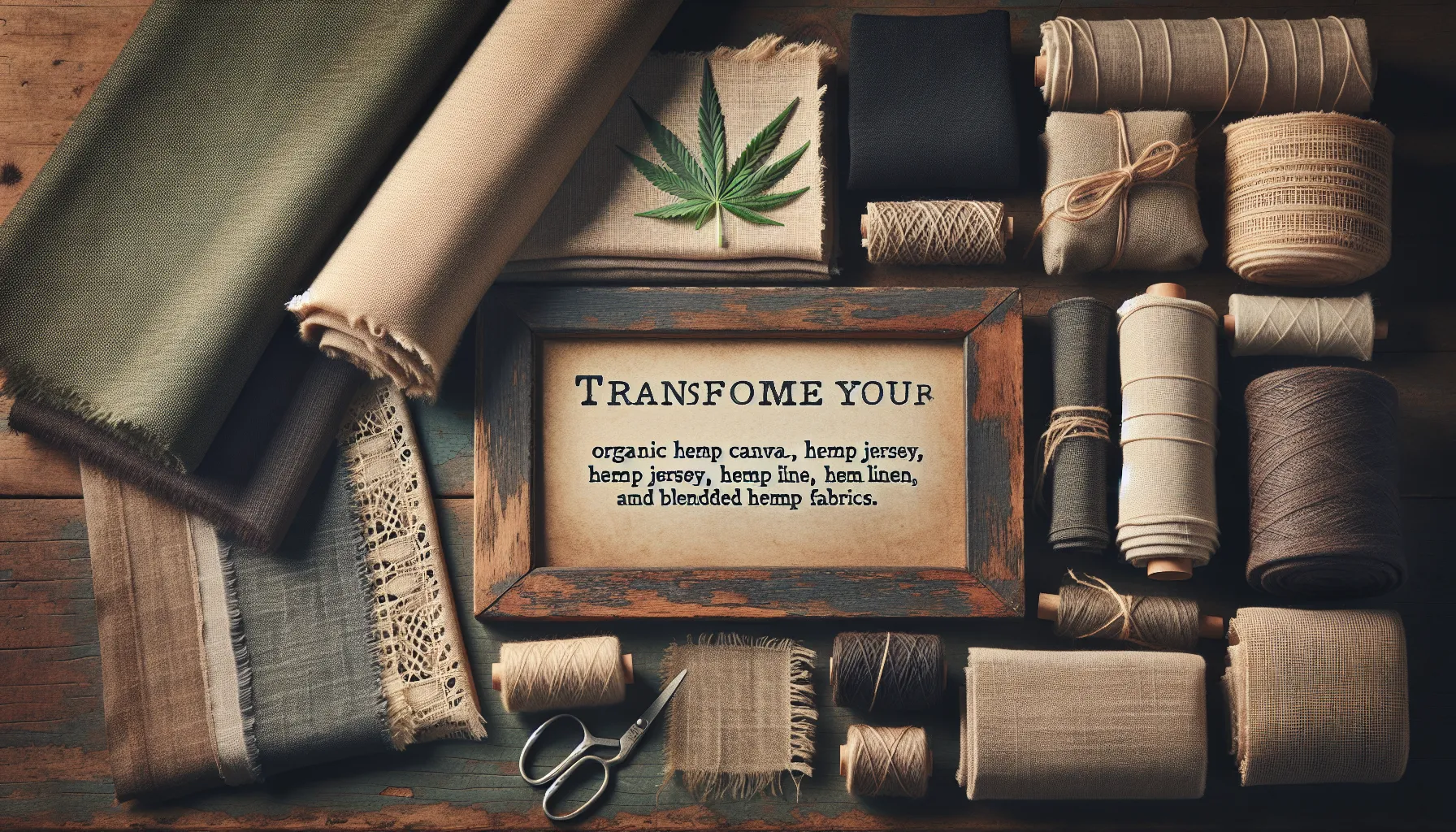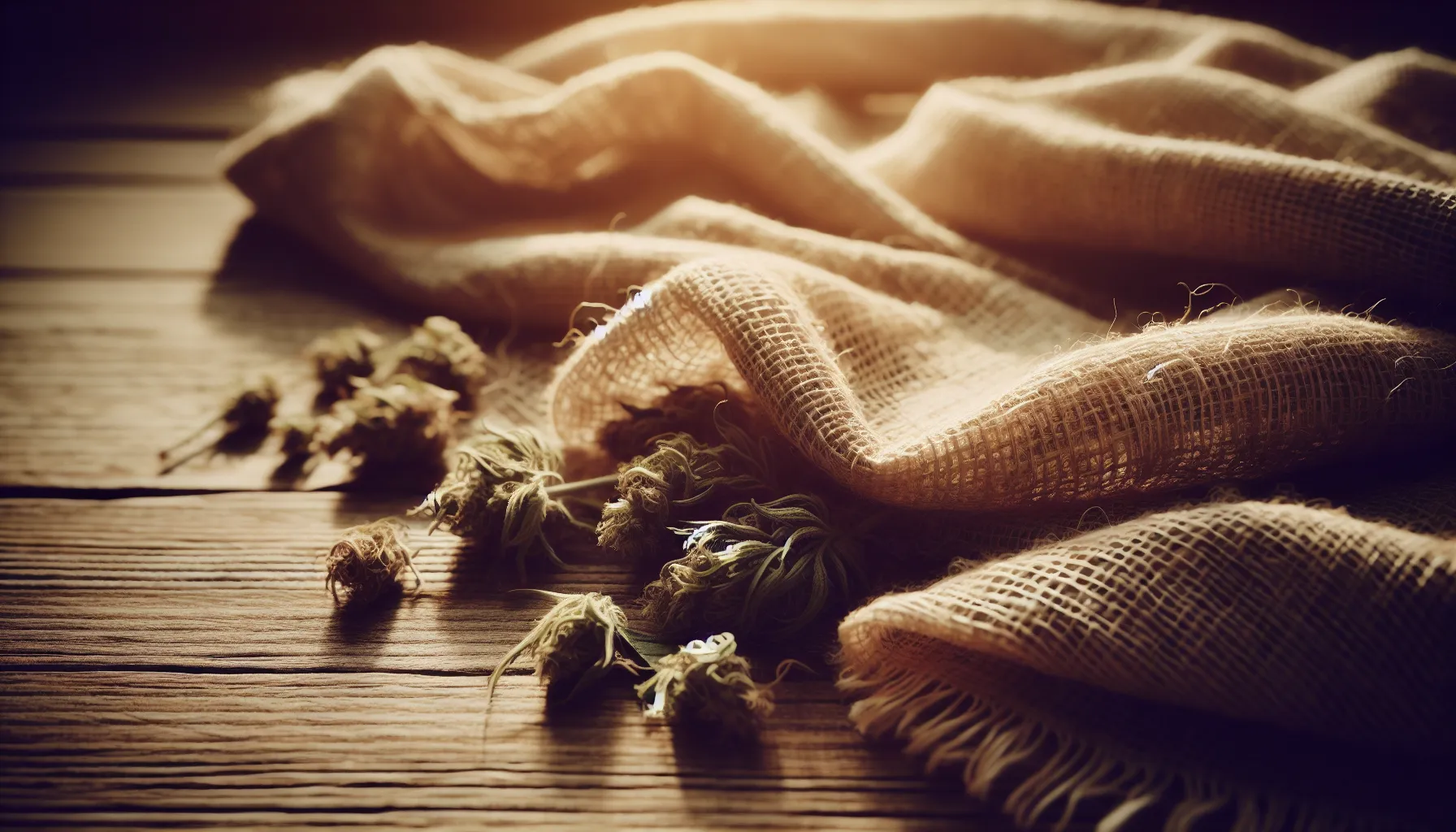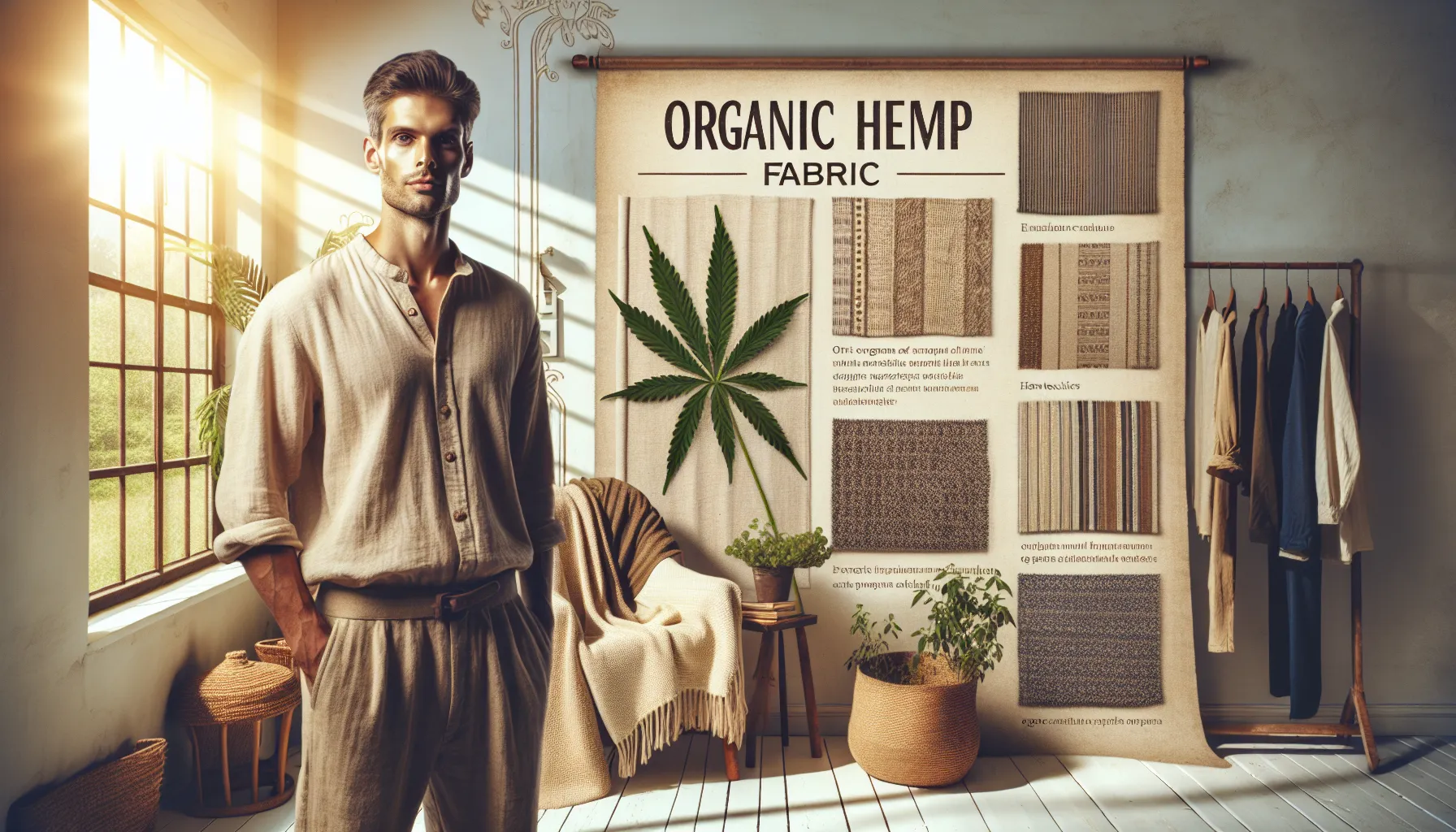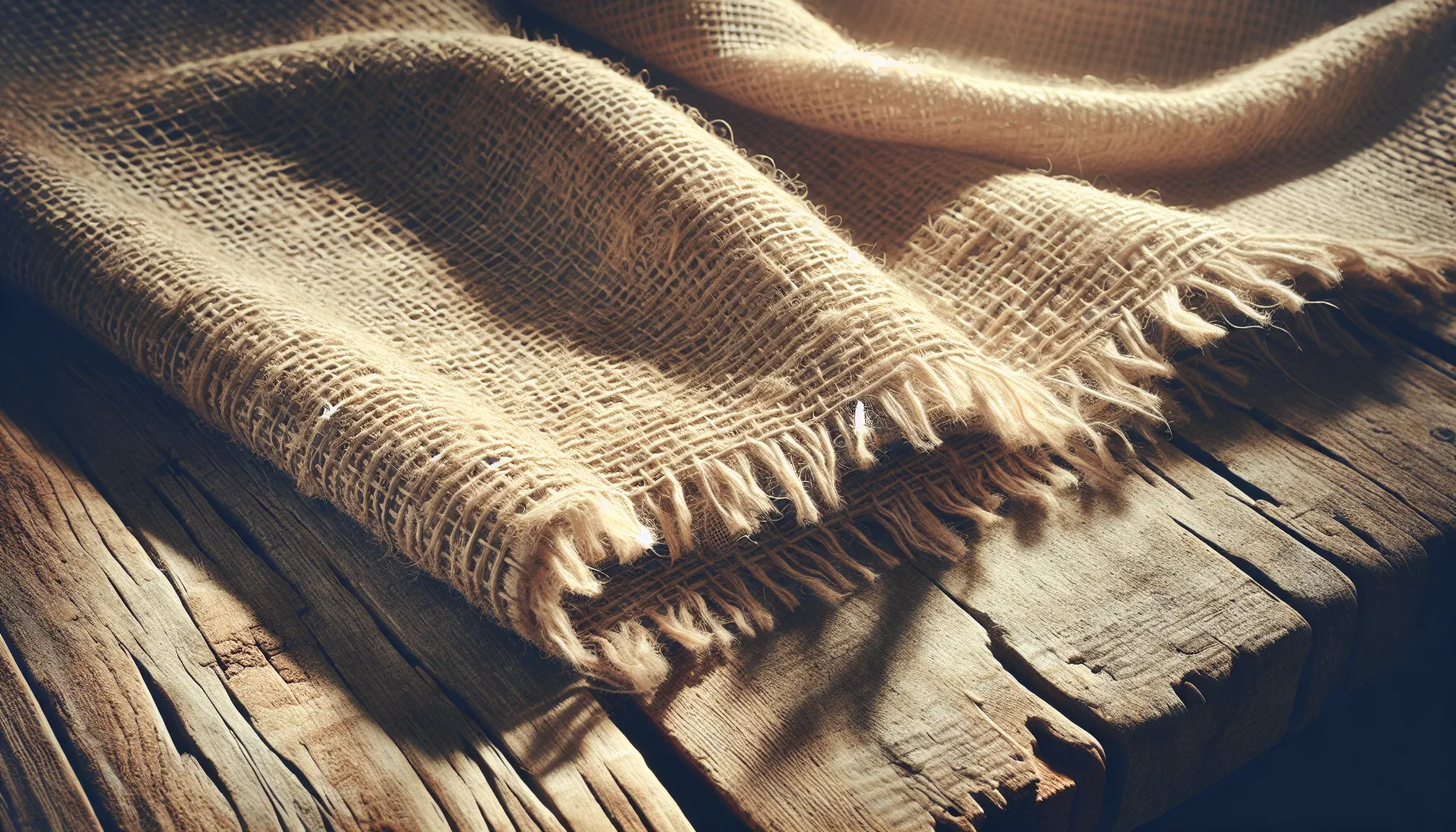If you’re looking for a sustainable and stylish fabric, organic hemp might just be your new favorite. This eco-friendly material is gaining popularity for its impressive durability and versatility. Unlike conventional fabrics, organic hemp is grown without harmful pesticides or chemicals, making it a healthier choice for both you and the planet.
Benefits of Organic Hemp Fabric
Organic hemp fabric offers numerous benefits, making it a preferred choice for consumers who prioritize sustainability and quality. You will find that its eco-friendly properties, durability, and comfort create an appealing option for various applications.
Eco-Friendly Properties
Organic hemp fabric is cultivated without harmful pesticides or chemicals, promoting a healthier planet. The growth process requires less water than conventional cotton, making it a water-efficient choice. Farmers often practice crop rotation and use natural fertilizers, enhancing soil health and biodiversity. Hemp plants absorb carbon dioxide during their growth cycle, contributing to reduced greenhouse gas levels. This fabric biodegrades efficiently, returning to the earth without contributing to landfill waste. Choosing organic hemp supports sustainable farming practices and aligns with a greener lifestyle.
Durability and Longevity
Organic hemp fabric is known for its exceptional durability, making it an ideal material for various products. The fibers are naturally strong, resisting wear and tear over time. Items made from hemp tend to last longer than those made from conventional fabrics, reducing the need for frequent replacements. This durability translates to a lower environmental impact, as less waste is produced in the long run. Hemp’s natural resistance to mold and mildew also adds to its lifespan. By selecting organic hemp, you invest in products that endure, ultimately leading to cost savings.
Breathability and Comfort
Organic hemp fabric excels in breathability and comfort, offering an excellent wearing experience. The natural fibers allow air to circulate, keeping you cool in warm weather. This fabric absorbs moisture effectively, helping regulate body temperature. Its softness improves with washing, resulting in a comfortable touch against your skin. Organic hemp also possesses hypoallergenic qualities, making it suitable for sensitive skin. With hemp’s moisture-wicking properties, you can feel fresh even during active use. Choosing organic hemp combines comfort with practicality for a versatile textile option.
How to Choose the Right Organic Hemp Fabric

Choosing the right organic hemp fabric involves understanding its types, considering various factors, and familiarizing yourself with certifications. This process ensures a suitable selection that meets your specific needs.
Different Types of Organic Hemp Fabric
Organic hemp fabric comes in several types that cater to different uses. Here are the most common varieties:
- Hemp Canvas: Durable and strong, hemp canvas is ideal for bags, shoes, and upholstery. Its resilience makes it suitable for heavy-duty applications.
- Hemp Jersey: Stretchy and soft, hemp jersey offers comfort and breathability, making it a popular choice for t-shirts and casual wear.
- Hemp Twill: With a diagonal weave, hemp twill provides a more structured fabric, suitable for pants and skirts. Its thickness contributes to durability.
- Hemp Linen: Soft and lightweight, hemp linen resembles traditional linen but offers greater durability. This fabric is ideal for summer garments and home textiles.
- Blended Hemp Fabrics: Combining hemp with materials like cotton or organic wool improves texture and softness. Blended fabrics provide added comfort while retaining hemp’s durability.
Assess your intended use when selecting a hemp fabric type to ensure it meets your requirements.
Factors to Consider When Purchasing
When purchasing organic hemp fabric, consider the following factors:
- Weight: Fabric weight affects durability and comfort. Heavier fabrics provide sturdiness, while lighter fabrics offer breathability.
- Texture: Check the texture to ensure it meets comfort standards. Smooth finishes are preferable for clothing, while thicker textures suit bags and upholstery.
- Color: Determine the suitable color or pattern for your project. Organic dye options contribute to a natural look while reducing environmental impact.
- Source: Research where the fabric originates. Local sources often have lower carbon footprints compared to imported fabrics.
- Purpose: Identify the intended use of the fabric. Different applications necessitate specific qualities, affecting your final selection.
Assessing these factors ensures a well-informed decision, leading to satisfaction with your organic hemp fabric purchase.
Certifications and Standards
Understanding certifications for organic hemp fabric is crucial for making informed choices. Key certifications to look for include:
- Global Organic Textile Standard (GOTS): GOTS certification verifies that the fabric meets strict organic standards. It also ensures environmental and social responsibility throughout the supply chain.
- OEKO-TEX Standard 100: This certification guarantees that the fabric is free from harmful substances, promoting safety for user health.
- USDA Organic: Fabrics with this certification indicate compliance with USDA organic farming practices, ensuring that no synthetic fertilizers or pesticides harmed the growth of the hemp.
- Fair Trade Certified: This certification supports fair wages and working conditions for farmers and workers in the supply chain.
Confirming these certifications provides peace of mind regarding the quality and ethical production of your organic hemp fabric.
How to Care for Organic Hemp Fabric

Caring for organic hemp fabric ensures its longevity and maintains its quality. Follow these guidelines for optimal maintenance.
Washing Instructions
Wash organic hemp fabric in cold or lukewarm water to preserve its fibers. Set your washing machine to a gentle cycle to prevent damage. Use mild, biodegradable detergents to avoid harsh chemicals that can weaken the fabric. Avoid bleach or fabric softeners for better results. Wash with similar colors to prevent dye transfer. When washing hemp blends, check care labels for specific instructions.
If handwashing, soak the fabric in a solution of cool water and detergent for 10 to 15 minutes. Gently agitate the water without scrubbing. Rinse thoroughly until all soap is removed. To handle tough stains, spot-treat with a mild detergent before washing. Allow the fabric to air dry whenever possible, as this reduces wear.
Drying Techniques
For drying, avoid high heat settings on machines, which can shrink the fabric. Instead, opt for a low or medium heat setting if using a dryer. To maintain shape, tumble dry the fabric for a short time and then hang it to air dry completely. Alternatively, lay it flat on a clean surface away from direct sunlight to avoid fading.
For quicker drying, after washing, gently squeeze water from the fabric without twisting. Use a drying rack for convenient air circulation. If you must use a dryer, place a few clean, dry towels with it to absorb moisture and help reduce drying time. Always check the fabric’s tags for any specific drying instructions.
Ironing and Storage Tips
Iron organic hemp fabric while it is slightly damp for easier wrinkle removal. Set your iron to a medium heat setting and use steam if necessary. If the fabric is completely dry, lightly mist it with water before ironing. Place a cloth between the iron and the fabric to protect it from direct heat.
For storage, keep organic hemp away from direct sunlight to prevent fading. Store in a cool, dry place. Use breathable garment bags for clothing items to avoid mustiness. Avoid plastic bags, as they can trap moisture and lead to mold. For folded items, store them flat to retain shape and reduce creasing.
Common Uses of Organic Hemp Fabric

Organic hemp fabric serves multiple purposes due to its durability and functionality. Here are some common uses of this versatile textile.
Clothing and Apparel
Clothing made from organic hemp fabric includes various items such as shirts, pants, dresses, and activewear. Organic hemp’s breathability provides comfort for all-day wear. Its moisture-wicking properties keep you dry during physical activities. Typically, hemp garments are lightweight, making them suitable for warm weather. The fabric’s strength ensures that items last longer, which minimizes waste. You can find organic hemp in many types of clothing styles, allowing for casual wear or more formal attire. Additionally, many brands focus on producing eco-friendly and sustainable apparel, which caters to environmentally conscious consumers. With the stylish designs and natural look, organic hemp clothing appeals to a wide range of individuals, from outdoor enthusiasts to fashion-forward shoppers.
Home Textiles
Household items benefit significantly from organic hemp fabric as well. Common home textiles include curtains, tablecloths, bed linens, and upholstery. Organic hemp’s durability makes it an excellent choice for frequent use in homes. It also possesses hypoallergenic properties, making it suitable for those with sensitive skin. The fabric’s ability to regulate temperature ensures a comfortable living space in both summer and winter. Additionally, hemp fabric resists mold and mildew, which increases the lifespan of home textiles. Organic hemp’s natural aesthetic enhances interior design, offering a rustic and earthy look. Many homeowners appreciate its eco-friendly origins, knowing that they are contributing to sustainability while maintaining stylish interiors.
Specialty Applications (e.g., Bags, Accessories)
Hemp fabric extends beyond clothing and home textiles into specialty applications. Common items include bags, wallets, and accessories such as hats and belts. Organic hemp’s strength provides durability essential for everyday use items. You can find hemp bags in various designs, from tote bags to backpacks, which appeal to environmentally conscious shoppers. Accessories made from organic hemp add a unique touch to personal style while promoting sustainable practices. Many brands utilize organic hemp in their products, ensuring they meet responsible sourcing standards. The versatility of hemp fabric in crafting specialty items shows its ability to cater to diverse markets, offering both functionality and eco-friendliness in a wide variety of applications.
Troubleshooting Common Issues with Organic Hemp Fabric

Organic hemp fabric offers many advantages, but you may encounter some common issues during use. Understanding how to troubleshoot these problems ensures a satisfying experience with your fabric.
Shrinkage Problems
Shrinkage occurs often due to the natural fibers in organic hemp. Prevent shrinkage by washing in cold or lukewarm water instead of hot. Choose a gentle cycle for washing. Air drying fabric is highly effective. If you use a dryer, set it on low or medium to minimize heat exposure. For items experiencing excessive shrinkage, consider pre-washing the fabric. Generally, organic hemp shrinks less than traditional cotton, but monitoring care instructions provides the best results.
Fading and Color Retention
Fading is a concern for colored organic hemp fabrics. To maintain vibrant colors, wash fabrics inside out to reduce friction during cleaning. Use mild, biodegradable detergents without harsh chemicals or bleach that can strip color. Line drying is preferable to maintaining original hues; sunlight can fade colors over time. If your item starts fading, avoid tumble drying and consider re-dyeing if necessary. Pay attention to fabric type, as darker colors tend to retain hues better than lighter tones.
Maintaining Texture and Feel
Organic hemp fabric possesses a unique texture that can change with improper care. For maintaining the desired feel, always wash in cold water. Avoid fabric softeners, as they can alter texture and diminish the natural qualities of hemp. Iron fabrics while they are slightly damp to preserve the original texture. Store fabric items in breathable garment bags away from direct sunlight to prevent degradation over time. Regular handling also helps maintain suppleness; frequently using your products keeps the fibers engaged and soft.
Alternative Uses for Leftover Organic Hemp Fabric

Leftover organic hemp fabric offers opportunities for creativity and sustainability. Instead of discarding scraps, consider repurposing them into useful items.
DIY Projects
Transforming leftover organic hemp fabric into DIY projects enhances its utility while promoting sustainability. Here are some practical and enjoyable ideas:
- Reusable Grocery Bags: Create sturdy shopping bags that reduce plastic use. Use larger fabric pieces for durability and reinforce the handles for added strength.
- Pouches and Bags: Sew small pouches for organizing items such as makeup, tools, or electronics. These can double as gift bags or travel organizers.
- Cushions and Pillows: Make decorative cushion covers using larger scraps. Use various patterns and colors for a unique appearance in your home décor.
- Scrap Quilts: Combine different fabric pieces into a charming quilt. This project requires minimal sewing skills and can provide warmth and style.
- Hair Accessories: Use strips of fabric to create headbands or hair ties. These accessories can offer a stylish, eco-friendly alternative to synthetic options.
- Table Runners: Design custom table runners for special occasions or everyday use. Choose vibrant colors to add character to your dining space.
- Art Pieces: Stitch or glue small pieces together to form wall art or fabric collages. This adds a rustic charm to your home while utilizing fabric remnants.
Upcycling Ideas
Upcycling leftover organic hemp fabric into new creations minimizes waste and maximizes resources. Consider these innovative approaches:
- Fabric Bookmarks: Cut fabric scraps into strips to craft unique bookmarks. These can serve as personal gifts for book lovers.
- Garden Ties: Use strong, flexible strips for supporting growing plants. This method provides a natural alternative to plastic garden ties.
- Keychains: Create functional keychains by sewing fabric pieces into small shapes. This adds a touch of personality to your keys.
- Patchwork Clothing: Incorporate scraps into clothing by adding patches or decorative accents. This technique adds flair to shirts, pants, or jackets.
- Coasters: Design eco-friendly coasters using thick fabric pieces. These offer a sustainable way to protect surfaces from drinks.
- Scented Sachets: Fill fabric pouches with dried lavender or other herbs. Place them in drawers or closets for a pleasant aroma while keeping moths at bay.
- Cat Toys: Stuff small fabric pieces with catnip to create toys for pets. These simple creations can provide entertainment for furry friends.
Utilizing leftover organic hemp fabric in creative projects reduces waste while adding functional and aesthetic value to your life.
Conclusion
Choosing organic hemp fabric not only benefits you but also supports a more sustainable future. Its durability and versatility make it an ideal choice for a wide range of applications, from clothing to home textiles. By opting for organic hemp, you’re investing in a healthier lifestyle while contributing to environmental conservation.
Caring for your organic hemp items ensures they last longer and maintain their quality, allowing you to enjoy their benefits for years to come. Plus, the creative possibilities with leftover fabric encourage you to minimize waste and embrace a more eco-friendly approach.
Incorporating organic hemp into your life is a step toward a more sustainable and stylish way of living. Embrace the change and make a positive impact today.
Frequently Asked Questions
What are the benefits of organic hemp fabric?
Organic hemp fabric is durable, versatile, and eco-friendly. It requires less water than conventional cotton, supports soil health, and absorbs carbon dioxide, reducing greenhouse gas levels. Additionally, it is breathable, moisture-wicking, and hypoallergenic, making it a healthier option for both consumers and the environment.
How do I choose the right organic hemp fabric?
To choose the right organic hemp fabric, consider its type (like hemp canvas or jersey), weight, texture, color, and intended use. Familiarize yourself with credible certifications, such as GOTS and OEKO-TEX, to ensure quality and ethical production.
How should I care for organic hemp fabric?
Care for organic hemp fabric by washing it in cold or lukewarm water on a gentle cycle with mild, biodegradable detergents. Avoid bleach and fabric softeners. For drying, use low or medium heat and air drying, and iron while slightly damp to maintain its quality.
What are common uses for organic hemp fabric?
Organic hemp fabric is used in various applications, including clothing (shirts, pants, and activewear) and home textiles (curtains, tablecloths, and upholstery). It’s also suited for specialty items like bags, wallets, and accessories, thanks to its durability and eco-friendly properties.
How can I troubleshoot issues with organic hemp fabric?
To troubleshoot common issues like shrinkage and fading, wash in cold or lukewarm water, and air dry to prevent shrinkage. Wash colored fabrics inside out and avoid harsh chemicals for better color retention. Store items in breathable bags away from sunlight to preserve texture.
What can I do with leftover organic hemp fabric?
Leftover organic hemp fabric can be repurposed into various DIY projects, such as reusable grocery bags, pouches, and cushions. You can also create upcycled items like fabric bookmarks, coasters, and cat toys, helping to minimize waste while adding functional value.


